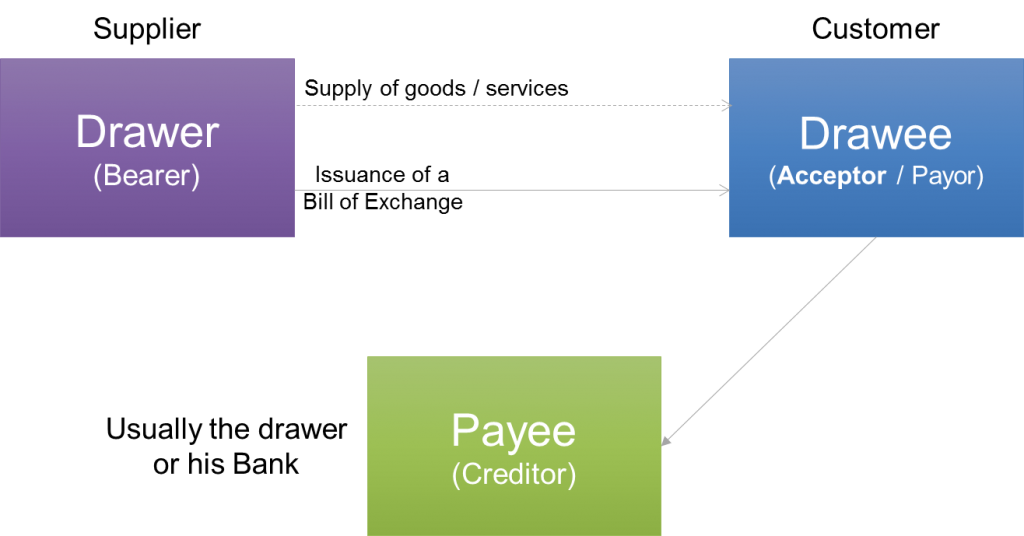DRAWER DRAWEE AND PAYEE MEANING IN BILL OF EXCHANGE
These terms are used in Negotiable Instruments. In case of Cheque payment The person who has a bank account and draw/write a cheque is the Drawer and his bank is the Drawee and to whom it is payable is the Payee. In case of self cheque the Drawer A person or bank that is ordered by its depositor, a drawer, to withdraw money from an account to pay a designated sum to a person according to the terms of a check or a draft. Cross-references. Commercial Paper. drawee. n. the party who is to be paid on a bill of exchange or check. (See: bill of exchange) drawee a person on whom a BILL OF Parties involved in Bills of Exchange: A bill of exchange may involve the following parties. 1. Drawer This is the person who writes and signs the bill 2. Drawee This is the person on whom the bill is drawn 3. Acceptor This is the person who accepts the bill. In practice, the drawee is the acceptor but a third person may accept a bill on behalf of the drawee.
Drawee definition is – the party on which an order or bill of exchange is drawn. the party on which an order or bill of exchange is drawn. the party on which an order or bill of exchange is drawn See the full definition. SINCE 1828. GAMES; BROWSE THESAURUS; WORD OF THE DAY on which a draft is drawn — compare drawer, payee. More Many people get confused when it comes to understand the three terms drawer, drawee, and payee. These three terms are used in Bill of Exchange. In this article, I will explain the drawer meaning, drawee meaning, and payee meaning with example. Before that, let me provide you the literary definition of drawer, drawee, and payee. Drawer meaning Bill of Exchange: A bill of exchange is a written order used primarily in international trade that binds one party to pay a fixed sum of money to another party on demand or at a predetermined date. Drawer: The person who makes the bill, or who gives the order to pay a certain sum of money, is the drawer of the instrument.
Drawee: The person who accepts the bill of exchange, or who is directed to pay a certain sum, is called drawee. Payee: The person receiving payment is called the payee, who can be a designated person or the drawer himself. DRAWEE. A person to whom a bill of exchange is addressed, and who is requested to pay the amount of money therein mentioned. The drawee may be only one person, or there may be several persons. The drawee may be a third person, or a man may draw a bill on himself. Drawer: It is the person who makes the bill and orders the drawee to pay a certain sum of money to the payee. The drawer generally issues the bill as part of a domestic or international commercial transaction to receive payment for value delivered. Drawee: The drawee is the other main party involved in the bill of exchange. He is directed to A bill of exchange is a signed by the creditor and accepted by a debtor. Parties involved in a bill of exchange 1.
Drawer: The person who makes a bill of exchange is called drawer. He is either a creditor or a seller and orders the borrower to pay the borrowed money. 2. Drawee: A drawee is the one to whom the bill of exchange is made.
